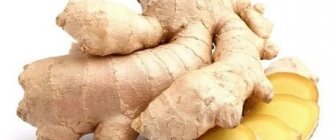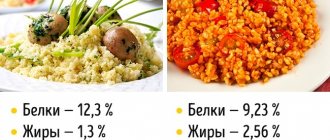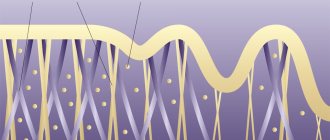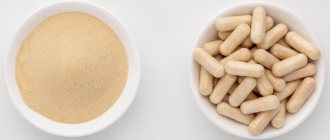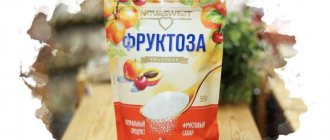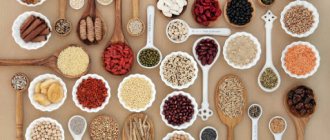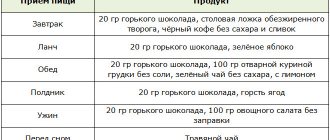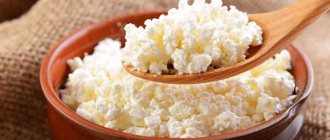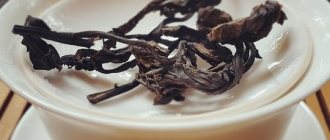Pectin - what is this substance?
Pectins are high-molecular heteropolysaccharides that are found in the membranes and intercellular spaces of plants.
These substances are structural components and help connect the walls of neighboring cells, allowing living tissues to maintain rigidity. Pectins are widely used in the production of confectionery products due to their ability to form thick gel-like solutions (hydrogels). Polymers are also used in finishing fabrics, making cosmetics, developing pharmaceuticals and medical biomaterials.
History of discovery
The first description of water-soluble substances with a strong gelatinizing effect was made in 1790 by the French chemist L. Vauquelin.
The researcher demonstrated how squeezed tamarind juice spontaneously forms a clear jelly that can be easily separated from the main mixture. The pectin compound was isolated in 1825 by the French pharmacist A. Braconneau. The scientist was able to describe the mechanism of its work: the substance gives plant fruits the ability to form a gelatinous mass when boiled with sugar. In doing so, Braconneau used a small amount of acid to destroy the salts synthesized by the chemical reaction. The scientist named the resulting substance pectin, which translated from Greek means “to harden.”
General characteristics
A characteristic property of plant polysaccharides is their ability to form hydrogels, due to which they are widely used in the food industry. Dilute polymer solutions exhibit the properties of Newtonian liquids, which is of great importance in the production of beverages. More concentrated formulations exhibit undesirable pseudoplastic behavior in which flow increases even with minimal force.
Pectin has found wide application in the food industry.
The chemical composition and tendency to gel make it possible to use this natural biopolymer in the pharmaceutical industry and medical practice. It is used in the design of drugs as a carrier of bioactive agents. However, it itself is capable of influencing metabolic processes, which is why it is considered as a tool for improving health.
Chemical composition
In modern science, pectins are a limited group of polymers whose structure is dominated by viscous rubber-like polyuronic acids. In higher plants, these substances consist of D-galacturonic acid residues that form long, unbranched chains.
Participation in metabolism
Since pectin is a water-soluble substance, it does not participate in the process of enzymatic digestion in the human small intestine, but is easily destroyed by the microflora of the large intestine.
While in the gastrointestinal tract, the polymer captures water and forms a gel-like structure that can bind and remove metal ions and bile acids. The gelling ability of pectin is considered as a potential mechanism of therapeutic effects on the body: the substance regulates the speed of movement of nutritional components and the degree of absorption of lipids.
Clinical studies have found that daily consumption of soluble fiber is accompanied by a decrease in serum cholesterol by 2-7%.
Varieties of pectin
There is no unified classification of pectins, however, in world practice it is customary to consider 3 types of plant polymers: yellow (citrus), thermoreversible and FX58.
Yellow
It is made mainly from apple pomace or dried citrus peels, less often sugar beet pomace is used. It has a low degree of esterification and is recognized as one of the most effective types of water-soluble fibers that can be included in the diet. This biopolymer is used for the production of confitures and jams.
Yellow pectin is made from citrus fruits and apples.
Thermal reversible
This natural citrus pectin has an esterification degree of 50-80%. Its ability to gel is determined by its low pH and high concentration of sucrose. It is thermally reversible, i.e. dissolves in hot water. This polysaccharide is used when working with highly acidic components.
FX58
The gelling agent FX58 is able to interact with calcium-containing products, incl. milk and cream. It is suitable for making milk jelly, mousses and sauces.
Other classifications
Based on the form of the substance, there are 2 types of pectins:
- powder, which must be added to the composition along with sugar at a temperature of 50°C;
- liquid extract, which is pre-diluted in hot water.
Biopolymers are also distinguished by the rate of gelation (setting). Moreover, each type has an individual degree of esterification and operates in different temperature conditions.
| Type of cage | Esterification, % | Temperature, °C | Gelation time, minutes |
| High | 70-76 | 75-85 | 10-15 |
| Average | 70-72 | 50 | 15-20 |
| Low | 56-68 | 45-60 | 20-25 |
Differences with gelatin
There are 2 main types of thickeners on the market - pectin and gelatin. Agar-agar is less common. When using them, you must not forget about some of the subtleties of working with them. Pectin and gelatin form gels, but they are not alike. The first is plant fiber that dissolves in water, the second is protein obtained from waste from processing animal carcasses (hides, tendons, cartilage).
This fiber is beneficial to the human body:
- Removes carcinogens and cholesterol from it.
- Contains fructose, which is not deposited in fat cells.
- Normalizes weight by regulating metabolic processes.
Pectin is used as a gelling agent, which under certain conditions forms jellies (gels). In a liquid state they are poured into molds, and when cooled they become semi-solid. It is used when preparing ice cream, marmalade, jam, and marshmallows. Pectin is registered as a food additive E440. This is how it is designated on the packaging.
Gelatin is used more widely: in the preparation of jellied dishes, desserts (mousses, marshmallows), and canning. It hardens at a temperature of 0–5 0C. It is an inexpensive protein substance that increases the viscosity of products. If you add it to water and boil it, you get animal glue (glutin). Then the broth is evaporated and clarified. The resulting jelly is cut and dried.
There are features of using gelatin that must be taken into account:
- The solution with it should not boil.
- The protein thickener is diluted in water, and then poured into compote or broth.
- Fruits are cut finely to gel them. Gelatin repels large pieces.
- Wait until it is completely dissolved, only then add it to the dish being prepared, without ceasing to stir.
Gelatin is useful:
- strengthens bone tissue and nails;
- stops the aging process (wrinkles and joint pathology);
- normalizes the functioning of the gastrointestinal tract, metabolic processes and brain function;
- reduces appetite.
Features of pectin
The exact chemical composition and structure of pectin have not yet been established due to the high complexity of this molecule. However, many properties of the biopolymer have been well studied in practice.
Interaction with other tools
Pectin substances are capable of forming complexes with other natural compounds, which is why they are used in the creation of many food products.
In industry, biopolymers undergo esterification - a reaction of substitution of carboxyls with methoxy groups of alcohols and acids, as a result of which the gel-forming ability of polysaccharides changes. Depending on the degree of methoxylation (DE), the following types of substances are distinguished:
- Highly esterified pectins (DE>50%) - gel only at high acidity, high concentration of sugars and low pH. With increasing degree of esterification, the stability of hydrogels is directly proportional to the pH and the level of saturation of the solution with dry components.
- Low-esterified pectins (DE<50%) are capable of gelation, regardless of acidity and amount of sugar, but require the presence of calcium ions.
A separate group of compounds consists of amidated biopolymers formed as a result of treatment with ammonia.
They are characterized by a low degree of esterification and low sensitivity to changes in calcium concentration.
Signs of excess
Pectin does not tend to accumulate in the body, however, consuming large amounts of the substance may be accompanied by stomach cramps, increased gas formation in the intestines and loose stools. Undesirable consequences are short-lived.
Consumption of pectin may cause stomach cramps.
Symptoms of deficiency
Insufficient consumption of high molecular weight polysaccharides is associated with the following symptoms:
- overweight;
- increased concentration of cholesterol in the blood;
- general intoxication of the body;
- frequent constipation;
- loss of skin elasticity;
- decreased sexual desire.
Pectin content table
Pectin is present in the largest quantities in fruits, but high concentrations of this compound are also found in vegetables, berries and some green plants. You can clarify the polymer content in products using special tables.
Fruits
| Fetus | Average amount of substance, % |
| Peach | 6,9 |
| Apricot | 6,3 |
| Apple | 5,9 |
| Plum | 4,5 |
| Pear | 3,9 |
| Lemon | 0,9 |
| Orange | 0,8 |
| Mandarin | 0,7 |
Vegetables
| Fetus | Average amount of substance, % |
| Radish | 11,1 |
| cucumbers | 7,7 |
| Bell pepper | 7,4 |
| Carrot | 7,0 |
| Sugar beet | 6,5 |
| Pumpkin | 6,2 |
| Eggplant | 5,9 |
| Peas | 3,8 |
| Tomatoes | 3,1 |
| White cabbage | 0,8 |
| Bulb onions | 0,6 |
Berries
| Fetus | Average amount of substance, % |
| Red Ribes | 9,1 |
| Black currant | 8,9 |
| Watermelon | 5,8 |
| Strawberries | 5,6 |
| Cherry | 5,4 |
| Raspberries | 4,9 |
| Cherries | 2,8 |
| Grape | 1,1 |
| Cranberry | 0,9 |
| Gooseberry | 0,8 |
Other products
Water-soluble dietary fiber is present in small quantities in green parts of plants, herbs and some seaweeds. The average content of polysaccharides in these products ranges from 1-2%.
Technology:
The main principle is that it should contain enough pectin, i.e. it should be thick, like jam - if you run your finger over it, it will leave a mark.
Here is a small table on the pectin content in berries and fruits (in case you don’t have pectin separately, but want marshmallows))
| Name | Pectin in% |
| Apricots | ∼ 0.9 |
| Banana (ripe) | ∼ 0.9 |
| Cherry | ∼ 0.4 |
| Pear | ∼ 0.6 |
| Strawberries | ∼ 0.7 |
| Cranberry | ∼ 0.7 |
| Gooseberry | ∼ 0.7 |
| Raspberries | ∼ 0.5 |
| Peach | ∼ 0.7 |
| Plum | ∼ 0.9 |
| Black currant | ∼ 1.1 |
| Blueberry | ∼ 0.8 |
| Apples | ∼ 1 |
You don’t need to add additional pectin to currants and apples.
From 0.9 and below, you can either boil the puree or add pectin (before adding, mix it with sugar, otherwise lumps will form). Here you need to experiment with the amount of pectin yourself, or follow the instructions on the package.
I haven’t found pure pectin on the market - only to order online, so for now I’m using a mixture of sugar and pectin - this particular type requires 1 part sugar to 2 parts fruit.
those. if we need 125 gr. fruit puree, then take 63 g of sugar + pectin to obtain good density, and 37 g. regular sugar (100 - 63 = 37) to achieve the recipe. Can you use less? I do not know, I have not tried it. Here sugar plays a structure-forming role, and its reduction must be carefully tested.
This ratio works great with raspberry puree (0.5) - for plum (0.9) and apricot (0.7) you can take less, for cherries (0.4) - a little more. In general, experiment here and look at the thickness of the finished puree.
Apple:
We peel the apples, remove seeds, cut them into cubes, put them in a saucepan, pour in a little water, simmer until softened and then put them through a blender or rub them through a sieve.
Berry:
Immediately puree the fresh berries in a blender (this will make it easier to strain), strain through a sieve to remove the seeds, and place in a saucepan.
Ice cream - either thaw it in advance, or put it in a saucepan, add water to slightly cover the bottom, and heat it over low heat. Then we put it in a blender and rub it through a sieve. Place back into the saucepan, bring to a light boil, add sugar with pectin, regular sugar, and boil for another 2 minutes.
After this, be sure to cool the puree in the refrigerator. It should be cold. Fully. This affects further steps. I make the puree the day before and leave it in the refrigerator overnight.
Main process:
0. First, pour in 5 grams. agar-agar (2 tsp powder) water (75 ml). This is necessary so that the agar swells (yes, it swells in cold water), which allows it to completely dissolve when cooking the syrup. If you pour it into water with sugar, the sugar will absorb almost all the moisture, the agar will not swell, as a result, it will not dissolve well, and ultimately the taste of algae will be felt. You can experiment with this =)
1. Pour protein into a bowl - 38 +- 2 g (from 1 C0 grade egg), add puree.
2. Beat until fluffy - the mass will increase, become much lighter, and a large and thick beak will remain on the whisk.
3. Stop whipping and cook the syrup. It’s better to do this the first time, then you can regulate when to start cooking the syrup so that the meringue is whipped to the desired state when it’s ready.
Syrup:
0. The height of the saucepan should be 4-5 times higher than the liquid level - during boiling, the mixture will foam strongly and may escape.
1. Add sugar (200g) to a saucepan with water and agar.
2. Place on the stove, heat 7 out of 9. Cook, stirring occasionally. The hotter the solution, the more actively you need to stir so that the agar does not stick to the bottom. I do this with a wooden spatula - an iron one can damage the coating, and a silicone one tried to melt after the first bath... but it depends on the spatula)
3. As soon as bubbles begin to appear, stir actively and constantly. Soon the foam will rise - the main thing is to stir over the entire surface of the bottom. From the second photo you can see that the foam does not reach the top by only 2-3 cm.
The main thing now is to get the right temperature. Many people advise removing the syrup at 110°C, but marshmallows at such a thickness seem somehow liquid to me... Therefore, we heat it up a little more - if you have a thermometer, then to 114°-115°C. As soon as it reaches 115°C, remove from the stove.
If you don’t have a thermometer, then look at the condition of the syrup. When approaching 110°C, threads begin to form - the syrup does not fall in droplets from the spatula, but stretches to the very surface of the main mass.
At 114°-115°C, you get the same “nozzle” state that is talked about in many sources on YouTube, for example. The thread thickens in size, but still stretches to the surface, and does not hang in “sniffles”, as in cartoons (for some reason I pictured exactly this image for myself, so I somehow cooked it all the way...).
What happens if you overheat the syrup? It will begin to crystallize, and if you decide to use it, you may end up with sugar grains in the marshmallows. It will 100% begin to crystallize when approaching 119°-120°C - this was the same case when I cooked it “all the way”... Before that, there were suspicions that something was going wrong, but there were no visible signs =D
4. Remove from heat, let the bubbles calm down, and continue the main process.
How to determine the concentration of pectin yourself
An accessible way to determine the concentration of pectin is the alcohol test, but it can only be done for squeezed fruit juice.
You need 1 tsp. cooled extract mixed with 3 tsp. denatured ethyl alcohol 70% strength. The mixture should be placed in a glass container and shaken. If the juice has a normal concentration of pectin, then the reaction results in the formation of a stable gel-like lump. In a liquid with a low polysaccharide content, small clots will appear.
The concentration of pectin can be determined using ethyl alcohol.
Properties of pectin
High molecular weight polysaccharides are considered safe food components. However, in some cases they may exhibit undesirable properties.
Useful
Natural polymers have many useful properties that are widely used in the food industry and biomedical practice. Researchers have linked their consumption to the following positive effects:
- expansion of the population of beneficial bacteria in the large intestine, which leads to strengthening of protective barriers and improved functioning of the digestive organs;
- decrease in blood glucose concentration;
- removing excess cholesterol;
- binding and removal of heavy metal ions from the body;
- reducing the risk of developing cancer.
In medicine, pectin compounds are used as a vehicle for delivering medicinal components to various tissues of the human body.
On their basis, carriers of genes and molecular structures, regenerating compositions and dressing materials are created.
Harmful
Taking pectin substances may be accompanied by undesirable consequences:
- weakening the body's ability to absorb beta-carotene and certain medications, incl. cholesterol-lowering drugs and tetracycline antibiotics;
- stomach cramps and increased gas formation;
- allergic reactions.
Taking pectin substances can lead to allergic reactions.
Polysaccharides of higher plants can interfere with the implementation of oncology treatment strategies, therefore, in the presence of pathology, strict control of pectin consumption is necessary.
Beneficial effect on the body
Pectin is a stabilizer and gelling component, but many medical preparations cannot be made without it. Its healing properties help fight many diseases.
First of all, it has a beneficial effect on the digestive system:
- Normalizes digestion. Astringent properties improve the condition of the gastrointestinal tract, speed up metabolism, and relieve constipation.
- Envelops the stomach and intestines, protecting against damage and harmful bacteria.
- Normalizes intestinal motility, eliminates microbial imbalance, alleviates colitis and intoxication.
- Stimulates the production of vitamins in the gastrointestinal tract by microorganisms. Pectin is useful for stomach ulcers: it relieves pain and relieves inflammation.
- Removes dangerous toxins and heavy metals from the gastrointestinal tract.
Basic properties of pectin.
- Restores peripheral blood circulation.
- Normalizes the amount of cholesterol, removes its excess, and prevents the formation of cholesterol plaque on blood vessels.
- Reduces the risk of diabetes, cancer, and pathologies of the cardiovascular system.
- Absorbs and removes dangerous foreign chemicals, bile acid, urea.
- Eliminates pesticides and radioactive substances. Removes mercury, lead.
- Helps absorb calcium and magnesium, which feed bone tissue and nerves.
- Restores tissue after surgery, burns, peritonitis.
Pectin, first of all, cleanses the organs, which is why it has another name - “the body’s orderly.”
What else do you need to know
Dietary fiber is not broken down into nutritional components, but sufficient consumption ensures metabolic processes. Therefore, it is important to understand under what conditions and in what quantities these substances should be included in the diet.
Daily requirement of the body
Experts don't set guidelines for how much pectin you should consume, but many manufacturers recommend eating 1,000 to 1,400 mg of fiber daily. To improve digestion and lose weight, you can increase your intake to 2500 mg.
What influences the need
The need for gelling agents increases with intoxication and infectious diseases. It is advisable to increase the volume of biopolymers in food if you are overweight, have poor digestion, or have high levels of sugar and cholesterol in the blood.
The need for pectin increases with excess weight.
Pectin digestibility
Dietary fiber is not digested in the small intestine, but when it enters the large intestine it is fermented by commensal bacteria. As a result of biochemical reactions, short-chain fatty acids are formed, which serve as an energy substrate for the body and a regulator of important metabolic processes.
Potential harm if consumed in excess
Foods on the list of foods high in peptides require monitoring. Despite the enormous benefits, sometimes this substance leads to deterioration in health. Pectin mainly causes harm when it is taken into the body in excess. The daily norm for an adult is 10-15 g. Exceeding these figures several times, a person risks causing the following complications:
- bloating, increased flatulence as a result of fermentation in the large intestine;
- discomfort in the lower abdomen, colic;
- violation of the microflora of the digestive tract;
- feeling unwell, dizzy;
- skin rashes;
- problems with nutrient absorption;
- difficulty digesting proteins and fats;
- in some cases, intestinal obstruction.
For these effects to occur, you actually need to eat a lot of fruits or vegetables. It is unlikely that anyone will consume kilograms of them. As practice shows, such side effects are the result of an overdose of food additives. Therefore, you should take any medications only strictly if indicated, and after consultation with your doctor.
Dilution of pectin
The method of use depends on the form of the pectin substance:
- The liquid extract is dissolved in boiling water and blended with a blender until smooth. The finished composition is poured in a thin stream into the hot fruit puree with continuous stirring.
- The powder is mixed with sugar and added to berry puree heated to 50°C.
Pectin is added to heated berry puree.
Forms
The food industry produces this gelling compound of plant origin in 2 forms: powder and liquid. They are not substituted in recipes. The liquid or powder form of the thickener determines in what sequence and how to mix the products when preparing a dish with a vegetable stabilizer.
Liquid extract is added to freshly prepared hot food, and powder is added to fruits and juices. It is actively used in cooking - in the preparation of fruit and berry jellies. Jams with it have perfect consistency, the jam becomes thick, and the marmalade comes out elastic.
How to make pectin at home
You can make apple thickener at home.
It is necessary to choose green, firm and tart fruits that have a high concentration of pectin compounds. Ingredients for cooking:
- large apples - 7 pcs.;
- water - 800 ml;
- lemon juice - 2 tbsp.
The apples are washed and cut into 4 parts along with the peel and core. Place the fruits in a saucepan, add water and lemon juice. Bring the mixture to a boil and cook for 40 minutes, stirring lightly. Then the composition is placed in cheesecloth and hung for several hours to strain. The resulting extract is brought to a boil again and boiled for about 20 minutes until its volume is reduced by half. The finished mixture is cooled and used within 4 days.
